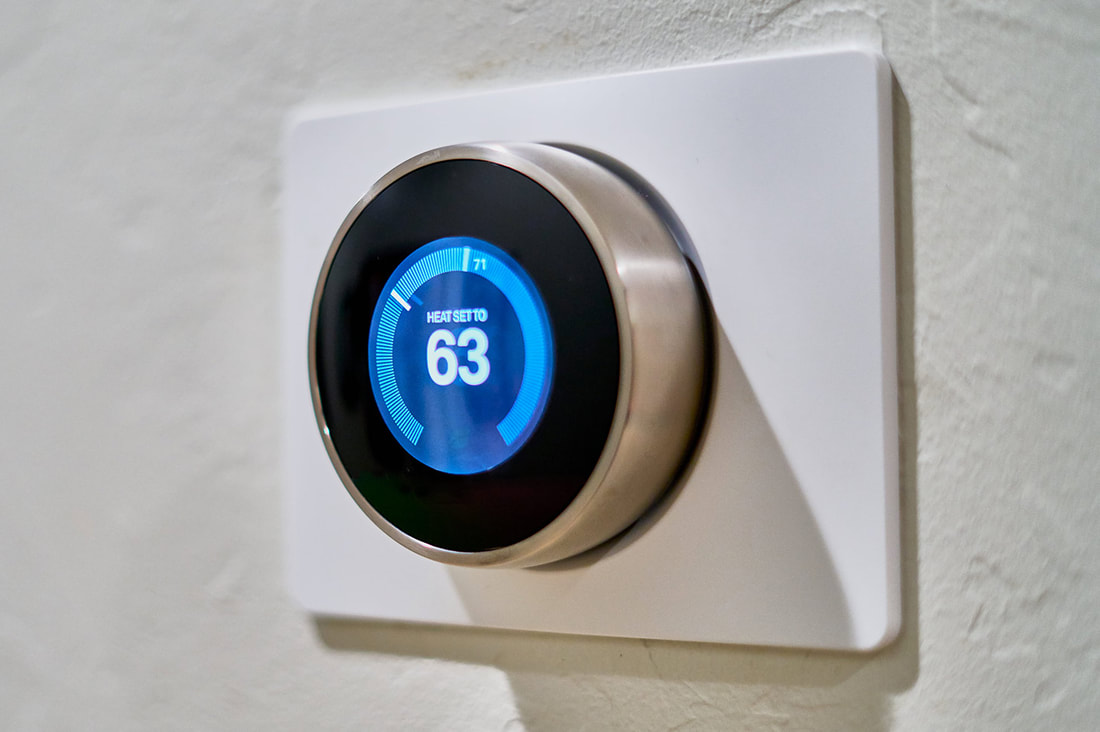3 Things You Can Check in Your Commercial Building (Instead of Buying That Smart Thermostat)9/29/2021 One thing we love about smart thermostats like Nest or Ecobee is that it provides us with information about our homes - temperature, humidity, carbon monoxide, and more - to keep us safe and help us find ways to reduce energy consumption. Data-driven decision making is great for any homeowner. The problem for commercial buildings is that there is no simple or affordable equivalent of a smart thermostat solution for a commercial property. While you might be looking for a commercial version of a Nest, existing market solutions are invasive, difficult to install as a retrofit solution, and can cost hundreds of thousands of dollars. Luckily, there are some simple things you can monitor in your building to help you address many of the issues identified by a smart thermostat allowing you to increase building occupant comfort and health outcomes while improving energy efficiency. How to check for occupant discomfort Have you ever had to bring a space heater or fan for your work area because you felt too hot or too cold? These common solutions increase energy use, while occupant discomfort can make people less productive and is one of the leading causes of tenant complaints in a building. The two key metrics for measuring discomfort are temperature and relative humidity. There are acceptable thresholds for each and are dependent on the season and external climate conditions. Generally, a temperature of 20°C to 24°C (68°F to 75°F), and relative humidity between 20-60% are considered comfortable. That being said, comfort is subjective - so if you find a high number of complaints, you’ll want to consider ways to verify the data. Pro tip: make sure you aren’t collecting measurements in a spot that might be adversely impacted by other conditions, like a windowsill. How to check for air quality problems Indoor air quality (IAQ) is an important topic - indoor environments with poor IAQ lead to decreased performance and cognitive function for occupants, and increase sick days and medical costs. While not exclusive, IAQ is primarily affected by carbon dioxide (CO2), volatile organic compounds (VOC), and particulate matter (PM). Knowing the levels of these pollutants can help building operators make decisions aimed at mitigating the negative health outcomes mentioned above. When measuring IAQ, remember that humans expel CO2. Having many people in a room with a closed door will cause a spike in CO2 levels. If CO2 isn’t decreasing over time, that means air isn’t being exchanged quickly enough (or there’s another CO2 source in that building). Generally, you want to see CO2 levels at under 700 parts per million (ppm). TVOCs and PMs function in a similar way - you want to identify areas where or times when levels are elevated. There is currently no acceptable level of risk for these variables in our building codes, but according to ASHRAE, as a general rule, try and keep VOC and PM levels as low as possible. Pro tip: Different types of PM sensors measure at different diameters. PMs at 10 micrometers (μm) measure items like pollen and vehicle emissions, while PMs at 2.5μm measure fire smoke and some bacteria. How to check for airborne disease transmission risk (including COVID-19) A building’s internal environment affects how airborne diseases, like the virus at the root of the COVID-19 pandemic, are transmitted within a space. While this data isn’t technically tracked smart thermostats, new IoT sensor capabilities have made data collection on airborne disease transmission risk available.
Decreasing transmission risk means increasing the ventilation and filtration levels in every room in your building. Some ways to measure this include seeing how quickly CO2 leaves the space, and as well as VOC levels. Relative humidity plays an important role in virus transmission as well. Dry air can cause drying of human membranes, eyes, and noses resulting in reduced protection against airborne particles. Air that is overly humid is a breeding ground for mould, fungi, and other risks. Another key measurement is the number of air exchanges per hour (ACH) your building is setting. Ideally, you want an ACH rate of 6 or above, but anything over 3 ACH is generally acceptable. Air filtration improvements such as portable air cleaners with a high HEPA filter help decrease virus transmission risk. Pro tip: use this digital tool put together by Harvard and CU Boulder on what type of portable air cleaner will work well in each room in your building - consider buying a filter for meeting rooms and other spaces that have many people in them for prolonged periods of time! Collecting data in your building will allow you to make informed decisions that will increase your building’s internal environment. If you’re looking to start, contact ioAirFlow to see how we can make this process easy and affordable for you. By: Matt Schaubroeck, CEO, ioAirFlow
1 Comment
7/13/2022 11:24:49 pm
You made a good point when you discussed that increasing the ventilation and filtration levels in your building can decrease the COVID-19 transmission. My friend wants to ensure that every visitor in their building is at the normal temperature. I think he should place a temperature scanning kiosk at every entrance to their building.
Reply
Leave a Reply. |


 RSS Feed
RSS Feed
